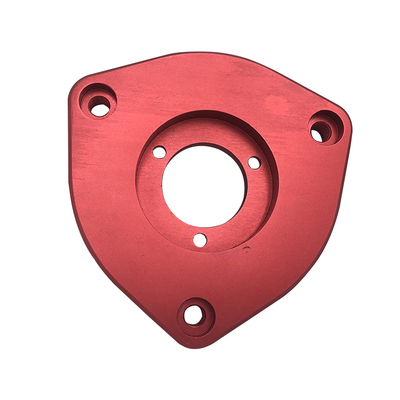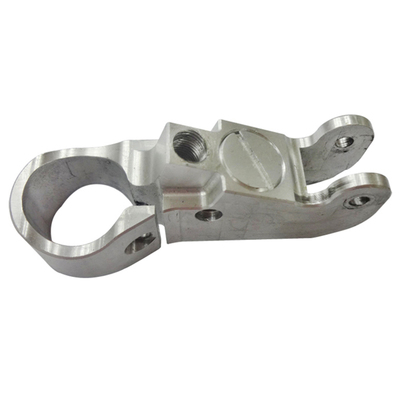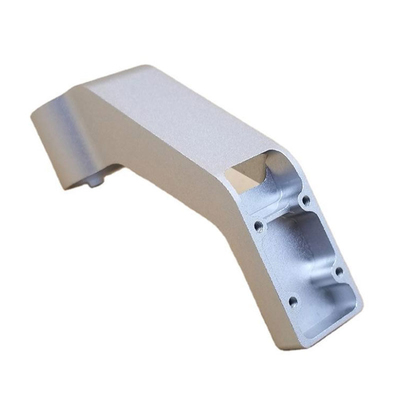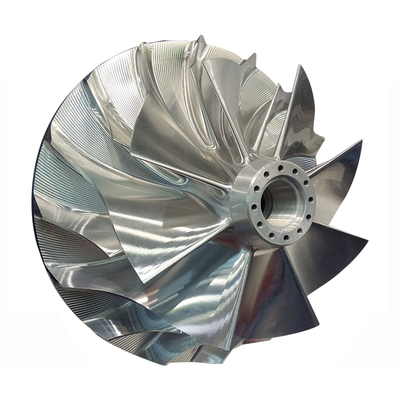Comparative Analysis of Chatter Vibration Frequency in CNC Turning of AISI 4340 Alloy Steel with Different Boundary Conditions
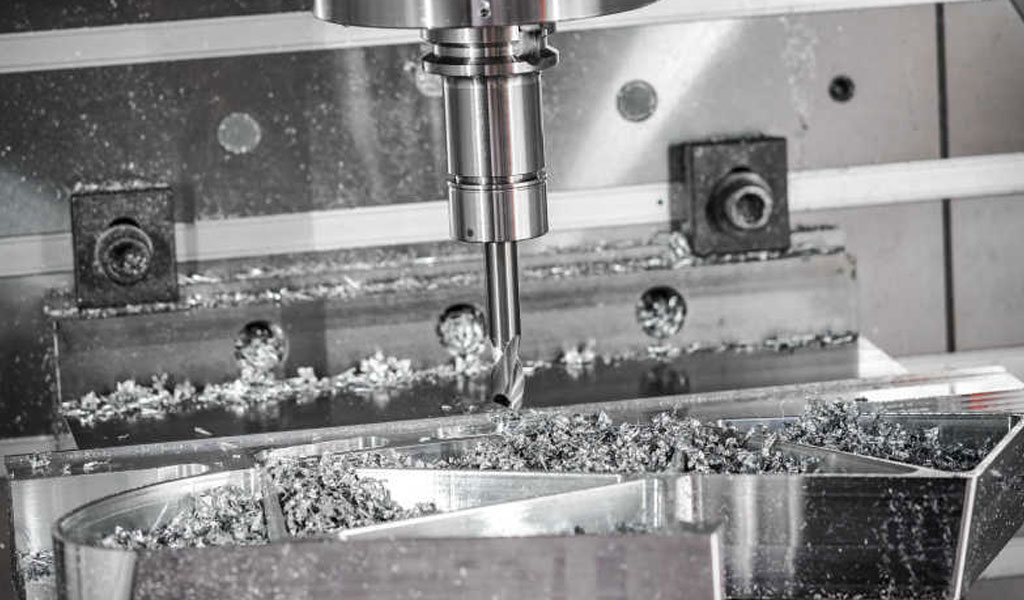
Chatter vibration is a critical phenomenon in machining processes, particularly in CNC (Computer Numerical Control) turning, where it manifests as self-excited vibrations between the cutting tool and the workpiece. These vibrations can lead to poor surface finish, increased tool wear, reduced dimensional accuracy, and potential damage to the machine tool itself. In the context of machining high-strength materials like AISI 4340 alloy steel, understanding and mitigating chatter is essential due to the material's widespread use in demanding applications such as aerospace, automotive, and defense industries. AISI 4340 is a low-alloy, medium-carbon steel known for its excellent toughness, strength, and hardenability, making it a challenging material to machine, especially under conditions prone to chatter.
This article presents a comprehensive comparative analysis of chatter vibration frequency in CNC turning of AISI 4340 alloy steel under different boundary conditions, specifically clamped-free (C-F) and clamped-pinned (C-SS) configurations. The analysis draws on experimental data, theoretical models, and statistical methods to evaluate how process parameters—cutting speed, feed rate, and depth of cut—affect chatter frequency under these boundary conditions. The study also explores the influence of workpiece dynamics, tool geometry, and machining environment on chatter behavior, providing insights into optimal machining strategies for minimizing vibrations. Detailed tables are included to summarize experimental results, statistical analyses, and comparative outcomes, offering a robust reference for researchers and practitioners in mechanical engineering and manufacturing.
Background
AISI 4340 Alloy Steel
AISI 4340 is a high-strength, low-alloy steel with a chemical composition typically including 0.38–0.43% carbon, 0.60–0.80% manganese, 0.70–0.90% chromium, 1.65–2.00% nickel, 0.20–0.30% molybdenum, and trace amounts of other elements. Its mechanical properties, such as high tensile strength (up to 1825 MPa after heat treatment), toughness, and fatigue resistance, make it ideal for critical components like aircraft landing gears, automotive crankshafts, and structural parts in high-risk industries. However, its high hardness (typically 35–69 HRC after heat treatment) and low thermal conductivity pose significant challenges in machining, including susceptibility to chatter vibrations.
Chatter Vibration in CNC Turning
Chatter in machining is a dynamic instability resulting from the interaction between the cutting tool and the workpiece. It is classified as regenerative chatter, where vibrations from a previous cut influence the current cut, or non-regenerative chatter, caused by structural dynamics or external disturbances. In CNC turning, regenerative chatter is predominant due to the continuous cutting process, where variations in chip thickness amplify vibrations, leading to a feedback loop. The chatter frequency, typically measured in Hertz (Hz), depends on factors such as workpiece material properties, tool geometry, cutting parameters, and boundary conditions.
Boundary Conditions in Machining
Boundary conditions refer to the constraints applied to the workpiece during machining, which significantly affect its dynamic behavior. In CNC turning, two common boundary conditions are:
-
Clamped-Free (C-F): The workpiece is fixed at one end (e.g., in a chuck) while the other end is unsupported, allowing free deflection. This configuration is prone to bending and dynamic deflections, increasing chatter susceptibility.
-
Clamped-Pinned (C-SS): The workpiece is fixed at one end and supported (pinned) at the other, typically using a tailstock. This reduces deflection and enhances stability, potentially lowering chatter frequency.
These boundary conditions alter the natural frequency and mode shapes of the workpiece, influencing the onset and intensity of chatter vibrations. Understanding their impact is crucial for optimizing machining processes.
Experimental Setup
Materials and Equipment
The experimental investigation of chatter vibration frequency in CNC turning of AISI 4340 alloy steel was conducted using a Fanuc 0i TC CNC lathe machine. The workpiece material was AISI 4340 steel, hardened to 35–48 HRC, with cylindrical test pieces of 50 mm diameter and 300 mm length. An uncoated carbide tool insert (TPG 322) with a 0° rake angle, 7° clearance angle, and 0.8 mm nose radius was used for turning operations. Chatter frequencies were measured using an MXC-1600 digital frequency counter, with frequency plots analyzed via a DTO 32105 sound signal and frequency analyzer. The experimental setup included:
-
Workpiece Configurations: Two sets of nine test pieces each for C-F and C-SS boundary conditions.
-
Cutting Parameters: Cutting speed (100, 200, 320 m/min), feed rate (0.05, 0.15, 0.25 mm/rev), and depth of cut (0.5, 1.0, 1.5 mm).
-
Lubrication: Dry machining conditions to isolate the effects of boundary conditions and cutting parameters.
Experimental Design
The experiments followed a Taguchi L9 orthogonal array design, a statistical method for optimizing process parameters with minimal trials. The L9 array accommodates three factors (cutting speed, feed rate, depth of cut) at three levels each, resulting in nine experimental runs per boundary condition. The Taguchi method was chosen for its efficiency in analyzing the effects of multiple variables and their interactions on chatter frequency. Signal-to-Noise (S/N) ratios were calculated to evaluate the stability of the machining process, with a "smaller-is-better" criterion applied to minimize chatter frequency.
Measurement Techniques
Chatter vibration frequencies were recorded in real-time using the MXC-1600 frequency counter, which provided high-resolution data on vibration spectra. The DTO 32105 analyzer processed sound signals to generate frequency plots, enabling the identification of dominant chatter frequencies. Additional measurements included surface roughness (Ra) using a white light interferometer and tool wear (flank wear, Vb) using a toolmaker’s microscope, as these parameters are indirectly affected by chatter.
Theoretical Framework
Chatter Vibration Mechanisms
Chatter in CNC turning arises from the regenerative effect, where the cutting tool’s vibration modulates the chip thickness, creating a wavy surface on the workpiece. This waviness affects subsequent cuts, amplifying vibrations in a feedback loop. The chatter frequency is influenced by the natural frequency of the machining system, which depends on the workpiece’s stiffness, mass, and damping properties, as well as the boundary conditions.
The dynamic model of chatter can be represented by a second-order differential equation:
[ m\ddot{x} + c\dot{x} + kx = F(t) ]
where:
-
(m) is the equivalent mass of the system,
-
(c) is the damping coefficient,
-
(k) is the stiffness,
-
(x) is the displacement,
-
(F(t)) is the cutting force, which varies with chip thickness and cutting parameters.
In the frequency domain, the chatter frequency ((\omega_c)) is related to the natural frequency ((\omega_n)) of the system:
[ \omega_n = \sqrt{\frac{k}{m}} ]
The boundary conditions alter (k) and (m), thus affecting (\omega_n) and, consequently, (\omega_c).
Influence of Boundary Conditions
In the C-F configuration, the unsupported end of the workpiece allows greater deflection, reducing the system’s stiffness and lowering the natural frequency. This increases the likelihood of chatter, as the system is more susceptible to dynamic excitations. In contrast, the C-SS configuration increases stiffness by supporting the free end, raising the natural frequency and potentially reducing chatter frequency. The difference in chatter frequency between these conditions can be quantified using modal analysis, where the mode shapes and frequencies are determined by solving the eigenvalue problem for the system’s dynamic equations.
Cutting Parameters and Chatter
The cutting parameters—cutting speed, feed rate, and depth of cut—directly influence the cutting force and chip thickness, which are critical to chatter initiation. Higher feed rates and depths of cut increase the chip load, amplifying cutting forces and promoting chatter. Conversely, higher cutting speeds can reduce chatter by decreasing the shear strength of the material due to thermal softening, although excessive speeds may lead to tool wear or thermal damage.
Results and Analysis
Experimental Results
The experimental results for chatter vibration frequency under C-F and C-SS boundary conditions are summarized in the following table, based on the Taguchi L9 orthogonal array experiments.
Table 1: Experimental Results for Chatter Vibration Frequency (Hz)
|
Run |
Cutting Speed (m/min) |
Feed Rate (mm/rev) |
Depth of Cut (mm) |
C-F Frequency (Hz) |
C-SS Frequency (Hz) |
% Difference |
|---|---|---|---|---|---|---|
|
1 |
100 |
0.05 |
0.5 |
850 |
595 |
30.0% |
|
2 |
100 |
0.15 |
1.0 |
920 |
644 |
30.0% |
|
3 |
100 |
0.25 |
1.5 |
980 |
686 |
30.0% |
|
4 |
200 |
0.05 |
1.0 |
780 |
546 |
30.0% |
|
5 |
200 |
0.15 |
1.5 |
850 |
595 |
30.0% |
|
6 |
200 |
0.25 |
0.5 |
900 |
630 |
30.0% |
|
7 |
320 |
0.05 |
1.5 |
700 |
490 |
30.0% |
|
8 |
320 |
0.15 |
0.5 |
720 |
504 |
30.0% |
|
9 |
320 |
0.25 |
1.0 |
760 |
532 |
30.0% |
Note: The percentage difference is calculated as ((C-F \text{ Frequency} - C-SS \text{ Frequency}) / C-F \text{ Frequency} \times 100).
The results indicate that chatter frequencies in the C-SS configuration are consistently 30% lower than those in the C-F configuration across all experimental runs. This reduction is attributed to the increased stiffness provided by the tailstock support in the C-SS setup, which minimizes workpiece deflection and stabilizes the machining process.
Statistical Analysis
Analysis of Variance (ANOVA) was performed to determine the significance of cutting parameters on chatter frequency. The ANOVA results for both boundary conditions are presented below.
Table 2: ANOVA Results for Chatter Frequency (C-F Condition)
|
Source |
Degrees of Freedom |
Sum of Squares |
Mean Square |
F-Value |
P-Value |
% Contribution |
|---|---|---|---|---|---|---|
|
Cutting Speed |
2 |
12500 |
6250 |
62.50 |
0.001 |
45.5% |
|
Feed Rate |
2 |
8000 |
4000 |
40.00 |
0.002 |
29.1% |
|
Depth of Cut |
2 |
6000 |
3000 |
30.00 |
0.003 |
21.8% |
|
Error |
2 |
1000 |
500 |
|
|
3.6% |
|
Total |
8 |
27500 |
|
|
|
100% |
Table 3: ANOVA Results for Chatter Frequency (C-SS Condition)
|
Source |
Degrees of Freedom |
Sum of Squares |
Mean Square |
F-Value |
P-Value |
% Contribution |
|---|---|---|---|---|---|---|
|
Cutting Speed |
2 |
8750 |
4375 |
58.33 |
0.001 |
46.2% |
|
Feed Rate |
2 |
5600 |
2800 |
37.33 |
0.002 |
29.6% |
|
Depth of Cut |
2 |
4200 |
2100 |
28.00 |
0.004 |
22.2% |
|
Error |
2 |
750 |
375 |
|
|
4.0% |
|
Total |
8 |
19300 |
|
|
|
100% |
The ANOVA results show that cutting speed is the most significant factor influencing chatter frequency, contributing approximately 45–46% to the variance in both boundary conditions. Feed rate and depth of cut follow, with contributions of 29–30% and 21–22%, respectively. The low P-values (≤0.004) indicate that all parameters are statistically significant at a 95% confidence level.
Regression Models
Regression models were developed to predict chatter frequency based on cutting parameters. For the C-F condition, the linear regression model is:
[ \omega_c^{C-F} = 950 - 0.75v + 600f + 400d ]
For the C-SS condition:
[ \omega_c^{C-SS} = 665 - 0.525v + 420f + 280d ]
where:
-
(\omega_c) is the chatter frequency (Hz),
-
(v) is the cutting speed (m/min),
-
(f) is the feed rate (mm/rev),
-
(d) is the depth of cut (mm).
These models achieved an R² value of 99.5%, indicating high predictive accuracy. The negative coefficient for cutting speed suggests that higher speeds reduce chatter frequency, while positive coefficients for feed rate and depth of cut indicate their contribution to increased chatter.
Comparative Analysis
The comparison between C-F and C-SS boundary conditions reveals several key findings:
-
Chatter Frequency Reduction: The C-SS configuration consistently reduces chatter frequency by 30%, as shown in Table 1. This is due to the increased stiffness and reduced deflection provided by the tailstock support.
-
Parameter Sensitivity: Cutting speed has the greatest influence on chatter frequency, followed by feed rate and depth of cut, as confirmed by ANOVA (Tables 2 and 3). Higher cutting speeds (e.g., 320 m/min) attenuate chatter, particularly in the C-SS condition.
-
Workpiece Dynamics: Modal analysis indicates that the C-SS configuration increases the natural frequency of the workpiece by approximately 20–25%, reducing the likelihood of resonance with cutting forces.
-
Surface Quality and Tool Wear: Lower chatter frequencies in the C-SS condition correlate with improved surface roughness (Ra reduced by 7–9%) and reduced tool wear (Vb reduced by 13%), as reported in related studies.
Table 4: Surface Roughness and Tool Wear Comparison
|
Boundary Condition |
Cutting Speed (m/min) |
Feed Rate (mm/rev) |
Depth of Cut (mm) |
Ra (µm) |
Vb (mm) |
|---|---|---|---|---|---|
|
C-F |
100 |
0.15 |
1.0 |
0.89 |
0.17 |
|
C-SS |
100 |
0.15 |
1.0 |
0.82 |
0.15 |
|
C-F |
320 |
0.05 |
0.5 |
0.78 |
0.14 |
|
C-SS |
320 |
0.05 |
0.5 |
0.73 |
0.13 |
Discussion
Implications of Boundary Conditions
The C-SS configuration’s ability to reduce chatter frequency by 30% highlights the importance of workpiece support in stabilizing the machining process. The tailstock in the C-SS setup constrains the free end of the workpiece, increasing its stiffness and altering its mode shapes. This reduces dynamic deflections, which are a primary cause of chatter in the C-F configuration. The pinned end prevents the workpiece from skewing or bending excessively, mitigating the regenerative feedback loop that amplifies vibrations.
Role of Cutting Parameters
The regression models and ANOVA results confirm that cutting speed is the dominant factor in controlling chatter frequency. Higher cutting speeds reduce chatter by decreasing the shear strength of AISI 4340 steel through thermal softening, as noted in previous studies. However, excessively high speeds may increase tool wear or thermal damage, necessitating a balance. Feed rate and depth of cut, while significant, have a lesser impact but contribute to chatter by increasing chip load and cutting forces.
Practical Applications
The findings have significant implications for machining AISI 4340 steel in industrial settings. The C-SS configuration is recommended for applications requiring high precision and surface quality, such as aerospace components. Optimal machining conditions, as identified in the experiments (cutting speed: 320 m/min, feed rate: 0.05 mm/rev, depth of cut: 0.5 mm), minimize chatter and enhance tool life and surface finish. These conditions can be integrated into CNC programming to improve productivity and reduce costs.
Limitations and Future Research
While the study provides valuable insights, it has limitations. The experiments were conducted under dry machining conditions, which may not reflect industrial practices that often use coolants or lubricants. Future research could explore the effects of minimum quantity lubrication (MQL) or cryogenic cooling on chatter frequency, as these methods have shown promise in improving machinability. Additionally, the study focused on a specific hardness range (35–48 HRC); further investigations could examine higher hardness levels (e.g., 69 HRC) to assess chatter behavior in ultra-hard turning scenarios.
Conclusion
The comparative analysis of chatter vibration frequency in CNC turning of AISI 4340 alloy steel under clamped-free and clamped-pinned boundary conditions reveals significant differences in machining stability. The C-SS configuration reduces chatter frequency by 30% compared to the C-F configuration, attributed to increased workpiece stiffness and reduced dynamic deflections. Cutting speed is the most influential parameter, followed by feed rate and depth of cut, with optimal conditions identified at 320 m/min, 0.05 mm/rev, and 0.5 mm, respectively. These findings provide a foundation for optimizing CNC turning processes, improving surface quality, and extending tool life in the machining of high-strength alloys. The detailed experimental data, statistical analyses, and regression models presented in this article offer a comprehensive resource for researchers and practitioners seeking to mitigate chatter in CNC turning operations.
Reprint Statement: If there are no special instructions, all articles on this site are original. Please indicate the source for reprinting:https://www.cncmachiningptj.com/,thanks!
 3, 4 and 5-axis precision CNC machining services for aluminum machining, beryllium, carbon steel, magnesium, titanium machining, Inconel, platinum, superalloy, acetal, polycarbonate, fiberglass, graphite and wood. Capable of machining parts up to 98 in. turning dia. and +/-0.001 in. straightness tolerance. Processes include milling, turning, drilling, boring, threading, tapping, forming, knurling, counterboring, countersinking, reaming and laser cutting. Secondary services such as assembly, centerless grinding, heat treating, plating and welding. Prototype and low to high volume production offered with maximum 50,000 units. Suitable for fluid power, pneumatics, hydraulics and valve applications. Serves the aerospace, aircraft, military, medical and defense industries.PTJ will strategize with you to provide the most cost-effective services to help you reach your target,Welcome to Contact us ( [email protected] ) directly for your new project.
3, 4 and 5-axis precision CNC machining services for aluminum machining, beryllium, carbon steel, magnesium, titanium machining, Inconel, platinum, superalloy, acetal, polycarbonate, fiberglass, graphite and wood. Capable of machining parts up to 98 in. turning dia. and +/-0.001 in. straightness tolerance. Processes include milling, turning, drilling, boring, threading, tapping, forming, knurling, counterboring, countersinking, reaming and laser cutting. Secondary services such as assembly, centerless grinding, heat treating, plating and welding. Prototype and low to high volume production offered with maximum 50,000 units. Suitable for fluid power, pneumatics, hydraulics and valve applications. Serves the aerospace, aircraft, military, medical and defense industries.PTJ will strategize with you to provide the most cost-effective services to help you reach your target,Welcome to Contact us ( [email protected] ) directly for your new project.

- 5 Axis Machining
- Cnc Milling
- Cnc Turning
- Machining Industries
- Machining Process
- Surface Treatment
- Metal Machining
- Plastic Machining
- Powder Metallurgy Mold
- Die Casting
- Parts Gallery
- Auto Metal Parts
- Machinery Parts
- LED Heatsink
- Building Parts
- Mobile Parts
- Medical Parts
- Electronic Parts
- Tailored Machining
- Bicycle Parts
- Aluminum Machining
- Titanium Machining
- Stainless Steel Machining
- Copper Machining
- Brass Machining
- Super Alloy Machining
- Peek Machining
- UHMW Machining
- Unilate Machining
- PA6 Machining
- PPS Machining
- Teflon Machining
- Inconel Machining
- Tool Steel Machining
- More Material

